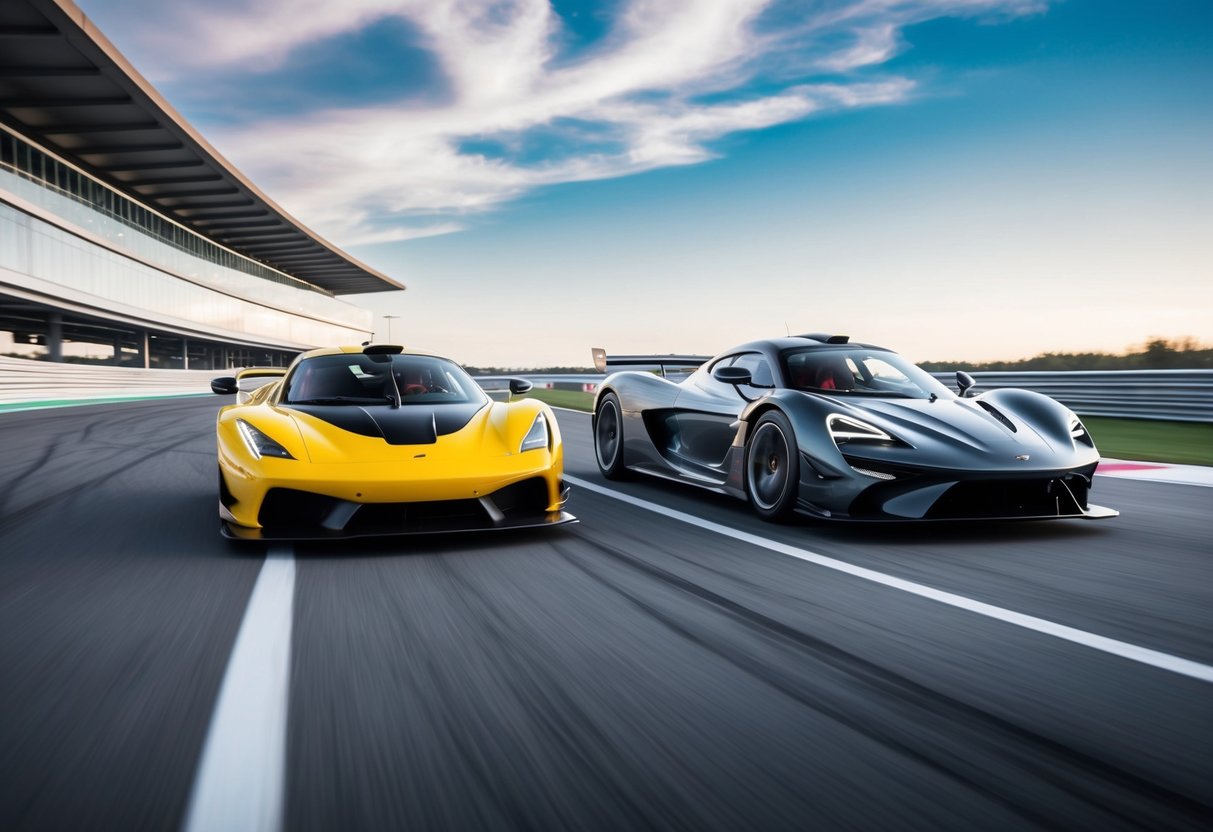
Performance in the Driver’s Seat
When it comes to the driving performance of hypercars and supercars, the difference lies in precision handling and the overall thrill factor. Hypercars often outshine supercars with their advanced engineering, which leads to superior lap times and a more exhilarating driving experience.
Handling and Control
Hypercars are equipped with cutting-edge suspension systems and aerodynamic designs that grant exceptional handling and control. These vehicles often use active aero components and complex suspension setups that allow for precise maneuverability at high speeds.
Supercars, while still impressive, typically feature more traditional suspension technologies. Their focus remains on offering an impressive driving feel, albeit not as advanced as hypercars. Both types of cars offer a thrilling experience, but the hypercar’s advancements push the boundaries of speed and agility.
The Thrill of Driving
The driving experience in a hypercar is unique, characterized by blistering acceleration and remarkable top speeds. It provides an unmatched level of excitement for the driver, thanks to powerful engines and state-of-the-art materials that reduce weight while enhancing performance.
Supercars deliver their own sense of thrill, often focusing on providing a balance between speed and practicality. Their engines are designed to offer a powerful yet more approachable driving experience. The thrill of driving is palpable, though not at the extreme level found in hypercars, making them a popular choice for those seeking excitement with slightly more everyday usability.
Comparing Hypercar and Supercar Brands
Hypercars and supercars are distinguished not only by performance but also by the prestige of their brands. Legacy brands such as Ferrari and Lamborghini have set benchmarks in automotive excellence, while new players like Pagani and Lotus are reshaping the landscape.
Legacy of Prestige Brands
The legacy of established brands plays a crucial role in differentiating hypercars and supercars. Ferrari, for instance, with models like the Ferrari 458, La Ferrari, and 488 GTB, has built a formidable heritage. Meanwhile, Lamborghini brought groundbreaking innovations with the Lamborghini Miura, pioneering the supercar category.
Porsche continues to merge luxury and speed with its iconic 911 and the modern hypercar, the Porsche 918. Each of these brands brings decades of racing pedigree and engineering prowess to the table. Bugatti, with its high-performance models like La Voiture Noire, offers exclusivity and unmatched speed, becoming synonymous with the hypercar category.
The dedication to craftsmanship and innovation in these brands secures a prestigious reputation among enthusiasts and collectors alike.
Newcomers in the Spotlight
In recent years, newcomers have emerged, challenging traditional legacy brands with innovative designs and advanced technology. Pagani, known for its artistic and high-performance cars, delivers vehicles like the Pagani Huayra, emphasizing bespoke design and exotic materials.
McLaren, with models such as the 650S, combines racing heritage with modern engineering marvels, standing out in both hypercar and supercar segments. The Lotus Evija represents a leap in electric hypercar design, showcasing the future direction of the industry with its eco-friendly but powerful performance.
These emerging brands continue to push boundaries, gaining attention and recognition as they introduce unique attributes that redefine what a hypercar or supercar can be.
Accessibility and Ownership
Hypercars and supercars represent the pinnacle of automotive engineering, yet they differ in how accessible they are to potential owners. They each come with unique challenges in terms of acquisition and maintenance, impacting the dream of ownership.
From Dream to Driveway
Hypercars, often embodying the latest in cutting-edge technology, remain elusive due to limited production runs and high costs. These vehicles are typically made to order, meaning potential owners face long wait times. In contrast, supercars, while still expensive, are produced in larger numbers, making them more attainable for enthusiasts with substantial budgets.
Prospective owners may also find it easier to explore financing options with supercars. Dealers can often provide a range of options tailored to the buyer’s financial situation, making the process slightly more accessible. For hypercar purchases, exclusivity often limits such flexibility, demanding a significant upfront financial commitment.
Maintaining the Dream
Owning a hypercar or supercar extends beyond initial purchase, requiring meticulous attention to maintenance. Hypercars, with their advanced and experimental components, can demand specialized care. This results in both higher costs and a limited number of qualified technicians able to handle such intricate machines.
Supercars, while still demanding in terms of care, generally benefit from broader market familiarity. This can translate to more accessible maintenance solutions, with a greater number of service centers offering expertise at slightly reduced costs.
Additionally, ownership of either type often involves substantial insurance fees, reflecting their high value and performance. Owners must prepare for these costs, which can add significantly to the annual expenditure associated with their prized machines.



